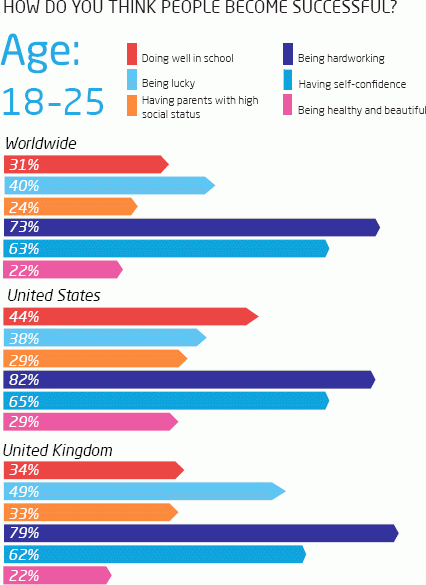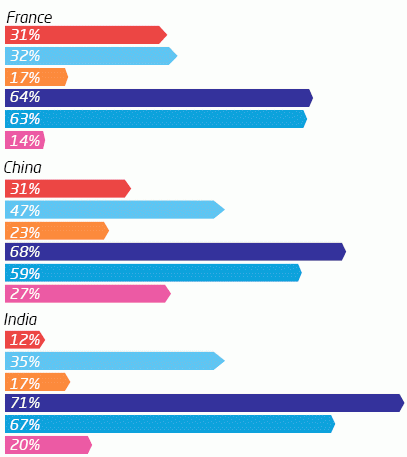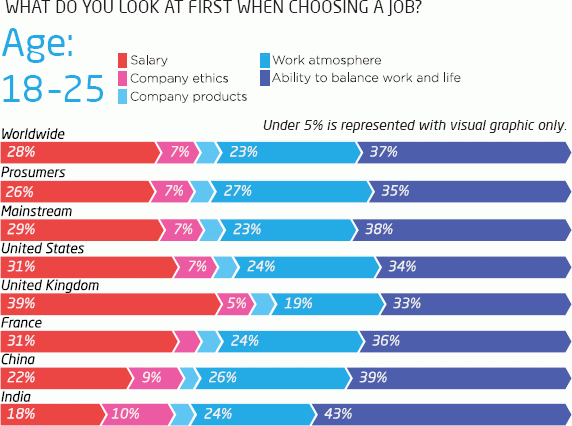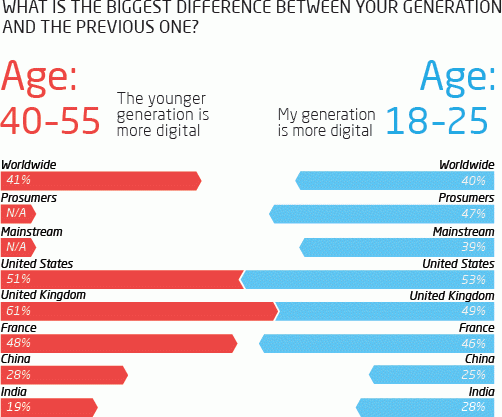First Article: Online Marketing Communications: Exploring Online Consumer Behavior by Examining Gender Differences and Interactivity within Internet Advertising. Carolynn McMahan, Roxanne Hovland, and Sally McMillan.
Marketing Implications of Interactivity and Corporate Web Sites
Fourth, interactivity has key implications in terms of reaching and connecting with target audiences. For the retailers in our study, for example, the target audience is Generation Y consumers. Generation Y represents 25% of the population and has considerable buying power. These college-aged consumers spend a considerable amount of time online and can be categorized as savvy computer users whose interactive activities include downloading, creating content, and chatting online (McMillan 2004). Their expectations for interactivity therefore are very high; they demand interactive elements that will engage them, entertain them, or speed up the process, while also giving them a sense of control. Marketers must realize how these consumers prefer to interact and how gender may influence their behavior if they hope to reach these savvy young consumers.
http://www.warc.com/Content/ContentViewer.aspx?MasterContentRef=4b180b53-26ac-4513-b4a9-b873a0833f33&q=marketing+communications+on+generation+y
Second Article: Millennials: The Challenger Generation. Source: Euro RSCG: Prosumer Report, Vol. 11, 2011
They were born into a post-communist, one-model world.
Too young to remember the Berlin Wall as anything but a pile of rubble, the Soviet Union, or the Cold War, millennials have known only the model of liberal capitalism. While conflicts and pockets of totalitarianism remain, these young people have grown up in an unprecedented period of political and economic standardization. And this impacts their relationship with the world and their notion of conflict: For the most part, they believe in continuity and gradual change rather than ideological schisms born of competing economic theories. There is little notion of “us vs. them” on a global scale.
Prosumer Point: Across generations, Prosumers are more technologically minded than the mainstream. Millennial Prosumers were significantly more likely than others to cite “being more digital” as the most important factor that sets their generation apart.
http://www.warc.com/Content/ContentViewer.aspx?MasterContentRef=9a202115-b75e-4980-9c34-c3df8af469d6&q=the+challenger+generation+euro+RSCG%3a+2011
HOW MILLENNIALS WILL CHANGE THE WORKPLACE
We live in a world of superficiality and instant fame. Celebrity is conferred on those who do nothing more than post a silly video on YouTube or appear on a so-called reality show. In what seemed to be no time at all, the heavily (fake) tanned and hard-partying Nicole “Snooki” Polizzi went from an appearance on an episode of MTV's “Is She Really Going Out with Him?” to being a cast member on “Jersey Shore” — to ringing the opening bell at the New York Stock Exchange, being one of the most popular Halloween costumes in the U.S. (2010), and being signed to write a book. A lack of substance reigns supreme.
In this atmosphere, one might presume that young people would be disinclined to work hard and pay their dues, expecting instead the sort of instant fame and fortune they see bestowed upon their media-magnet peers. In reality, the millennial generation considers effort and attitude the most important ingredients for success: 73 percent cited “being hardworking” as key to achievement, and 63 percent said “having self-confidence” is vital. In sharp contrast, the way one looks and the social status of one's parents were cited as important by less than a quarter of the sample. No matter how much evidence they see to the contrary, the young still believe in the meritocratic model.



This doesn't mean they are naïve. Millennials have developed a pragmatic and utilitarian approach to the work world. For them, work is primarily about earning money (45 percent chose this response) rather than such “softer” aims as personal fulfillment (25 percent) or being a productive member of society (12 percent). They live, after all, in a capitalist society and understand they must earn a living to survive. That said, salary is only one factor they look at when considering a job offer — and, for nearly three-quarters of them, it's not even the most important one. When asked to choose the single most important factor in a job, 37 percent cited the ability to balance work and life, while just 28 percent cited salary and 23 percent said work atmosphere. Combining the scores for life-work balance and atmosphere, it is clear that millennials expect at least some degree of happiness in their work situations. Money is not a sufficient counterbalance to misery.
Third Article: 40 years of change. Matthew Hooper
Technology at the root of change
Now it is not uncommon for schoolchildren to have a PlayStation or Xbox, or both, to play their games on, as well as a family computer in their home to do their homework. And the next generation of school children will be learning not only how to use and program a computer, but also how to build websites.
Television has progressed from one black-and-white channel to hundreds in full colour showing anything and everything. There is more choice, and the diversity of programmes has opened us up to different attitudes and cultures whether the content is better, I leave you to decide.
Travel has also shaped society dramatically. We have become better versed in how and where to travel. Minds have been broadened, having been exposed to different cultures, societies, languages and of course food.
Global trade has in turn increased, as transport has become easier and national boundaries disappear, and with international commercial treaties in place this means competition has become greater so certain brands have become stronger, larger and global, to the detriment of 'old' home-grown ones. As a result, national identities have become diluted. With this increased choice of goods, the launch of products in multi-territories is now a must, as is the speed to be first in and grab share meaning that the marketplace has become even more competitive and the price of failure is enormous.
Youth and age
The industry continues to attract young talent, particularly on the agency side, with 90% of agency people under 40, and 60% under 30. Will the managing directors and chief executives of these agencies, who are from a completely different generation, understand this new generation of recruits, or are they too long in the tooth to relate? Or will they in fact represent the money-rich time-rich consumer of 20 years from now?
The young 'ideas generation', has been exposed to new influences, and shaped by different elements from their predecessors and this leads to clashes with the 40- or 50-year-old managing director who still holds the power. For the old generation, the skill needed is the ability to listen, and be receptive to new ideas.
The creative process is being subjugated as the pressures for speed to market and the need to succeed increase. We can now frequently see marketers falling back on old ideas that have a touchpoint with a certain generation, and like all good ideas just might engage a new audience.
We may well see more ideas re-emerging as we do in the movies, such as Charlie's Angels and Starsky & Hutch, who are being seen for the first time by many, or in music such as 'Uptown Girl' by Westlife, not by Billy Joel.
Fourth Article: The Interactive Consumer. Clare Lees
The Four Attitudes to Technology
Combining these key determinants and doing further factor and cluster analysis, led to the identification of four types of consumer groups, based on their attitudes to technology.
- Technophiles, 24% of consumers. Typically they are under 35 years, male C1s, they work with technology and they do not need to be convinced about the benefits of technology. "lost generation" as far as technology is concerned. They lack confidence and do not appreciate the benefits. Typically women over the age of 60.
- Aspirational technophiles, 22% of consumers, and typically AB males. These are pretty enthusiastic about new technology per se, but less so about the applications.
- Functionals, 25% of consumers. they are uninterested in technology, but not hostile to applications. Typically, female over the age of 45. Where applications enhance existing products they are very enthusiastic.
The most important groups for developing the demand for new technology products and services is the 47% comprising the functionals and aspirationals. The successful players in the telecommunications sector will need to convert the caution and hesitancy exhibited by these consumers into real purchasing power and use.
The need for relevant consumer research in the telecom market place is critical not only to understand those issues described above but also for service providers to determine the extent to which any new service or product can actually meet the needs of consumers. New products or services are likely to succeed if they have the capacity to not only meet existing consumer needs but satisfy them more efficiently or indeed, identify new needs which have typically not been recognised by consumers.
The final element of the consumer research which is useful to consider is the understanding of how the service or product is incorporated into the every day life of the consumer once it has been acquired. As has been discussed, acquisition depends not only on the expectation that the product/service will meet a need but also on the consumer's attitude towards technology, the ability to purchase and occupational status etc. Once it has been acquired, if it is a success, the role of the product or service may well change - for example, the telephone was originally developed as an enhancement to the telegraph - a way of sending and receiving information. Slowly the operators realised it was being used by women for social interaction - integration had changed the role of the 'product'.











